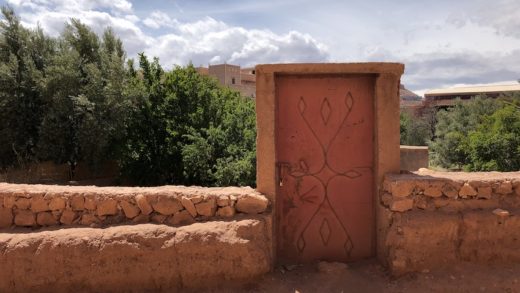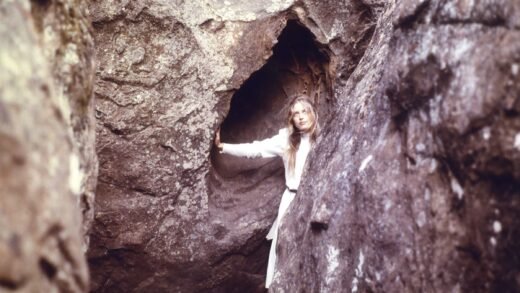Strata, published by University of Chicago Press, collects William Smith‘s geological maps in an elegant, radically colored (perhaps bordering on garrish)* volume. I learnt of it from Jenny Uglow’s article in the March 11th, 2021 issue of New York Review of Books, “The Reader of Rocks.”
Strata: William Smith’s Geological Maps
With an Introduction by Douglas Palmer and with a Foreword by Robert Macfarlane
256 pp., 500 color plates, 10 1/2″ x 14 3/8″
University of Chicago Press, 2020
*Andrea Gawrylewski in Scientific American aptly calls it “Technicolor.”
Gallery of My Copy of Strata

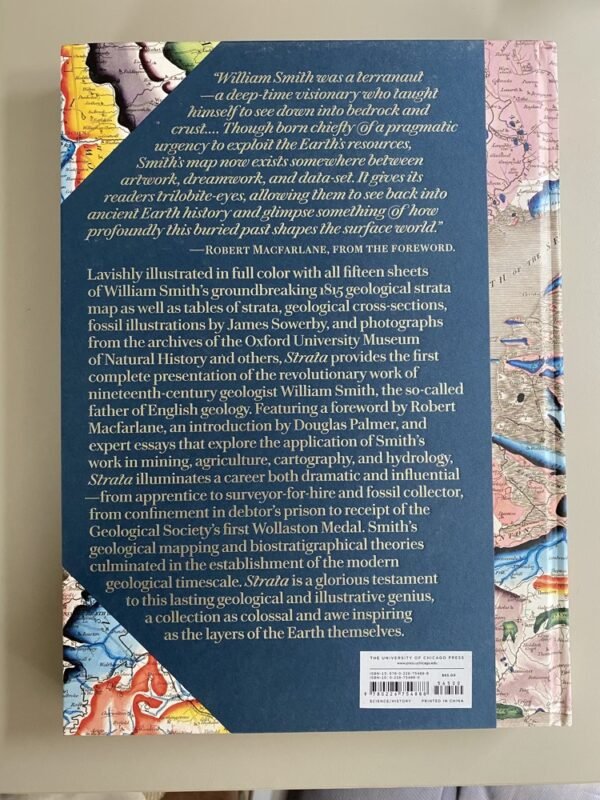

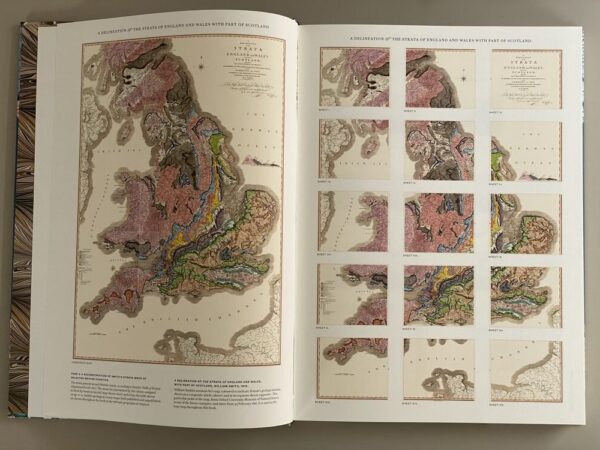
This is a beautiful book, recalling my first experience of a book the sheer physicality of which made a claim on my attention, National Geographic’s Atlas of the World (now in it’s 11th edition, but mine was from the early 1980s). It was 12.7 x 1.6 x 18.9 inches and weighed at least 5 lbs.
Strata is more manageable—and I’m much larger than I was. Its images would not appeal to the eyes of a small boy. He can understand space and planets (the first pages of the Atlas), but he cannot appreciate that what lies beneath his feet has a comparably history and a story to tell. What lies beneath his feet is literally in his world, unlike the contents of those first pages of the Atlas. Looking at those pages I probably thought to myself, “It’s so old!”*
*How a Danish friend mocked Americans’ comments walking around any European city
Geology Fails the Imagination, Inspires the Intellect?
There’s something interesting about that failure. The child’s imagination is more powerful than its intellect, so we say. The latter’s development marks maturity, so we say.
But what could be more open to the imagination’s powers than something so immediate. Do celestial bodies really enjoin the imagination? Don’t they simply dazzle us because we cannot imagine their size. This is some version of the experience of the sublime, right (albeit not Kant’s).
William Smith constructed these maps through observation, certainly—working as a surveyor for different employers). But observation was not adequate. Some other specific cognitive work needed to be done, the likes of which has always perplexed me.
How is Resemblance Recognized?
I’m simply asking, for example, how people recognize a chair to be a chair. That is, how does one move from knowledge of this chair before me to knowledge of the next chair, that they share certain qualities. How does resemblance occur in the mind?
Whenever I would talk about about these things in the philosophy courses I taught, I always fell back on Socrates’ explanation as a starting place. The concept preexists, making the cognition possible.*
*Which is not to say that Socrates states we have concepts of chairs, to be clear.
So then when we moved past ancient philosophy …
Judgments of Geological Continuity
Were the fossils the starting place? Smith had a collection of fossils that poverty required him to sell in 1819. Smith saw that features in this place corresponded to features elsewhere and that they were not discontinuous. That last point is so essential: what’s visible here and there may not be visible in between, but that does not mean it is not there.
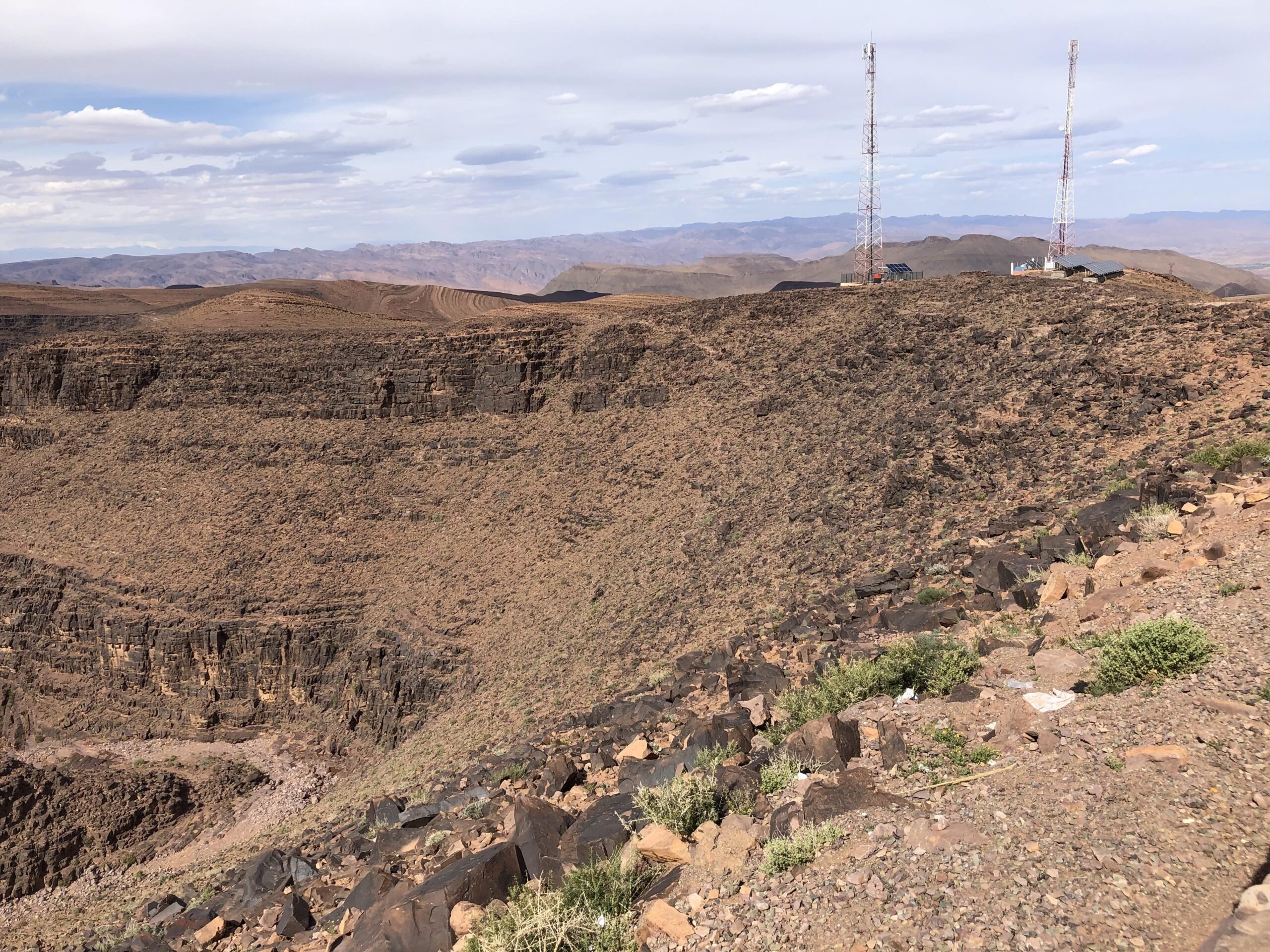
My Geological Moment?
Somewhere the concept of deep time. In the image above from Morocco, repeated rock formations in which the rocks seems to be spread evenly across a surface making me wonder how did this happen. Not unlike someone being hit over the head with a pan and wondering, “How did this happen?”
The Atlas mountain range once connected to the Appalachians.
Book Features
Robert Macfarlane — not to be confused with comic book artist Todd McFarlane (whose Batman covers were freaking AWESOME!) — writes the Foreword to the volume, beginning with reflections like those I included above (thanks Rob) and ending with these comments:
I have occasionally wondered what it would have been like to be in the field with William Smith; to join this practical, prophetic man on one of his thousands of early morning ‘walkings-out’, pacing the land with notebook and hammer in hand, peering at the ground, prying at fossils.
Smith collected and catalogued ammonites and belemnites, corals and brachiopods, as he unfolded the hidden history of the Earth. Our own epoch is already creating its fossils-to-be.
It occurs to me that among the relics that a far future William Smith might discover, were he to be prospecting the strata of the Anthropocene, would be the trace-fossils of billions of plastic bottles, chicken and swine bones in fabulous abundance, the crushed rubble of our cities, and a curious concentration of Lead-207, the stable isotope at the end of the Uranium-235 decay chain.
I guess I’m less interested in the Anthropocene. I remember finding glassware in the ground, in a ravine not far from where the church and parsonage where I grew up. I wondered how old it was, if it was worth something.
What I want to see are those changes that occur in the layers from one millennium to a dozen later, still only infinitesimal changes, while human generations have passed like ants crossing the ground.

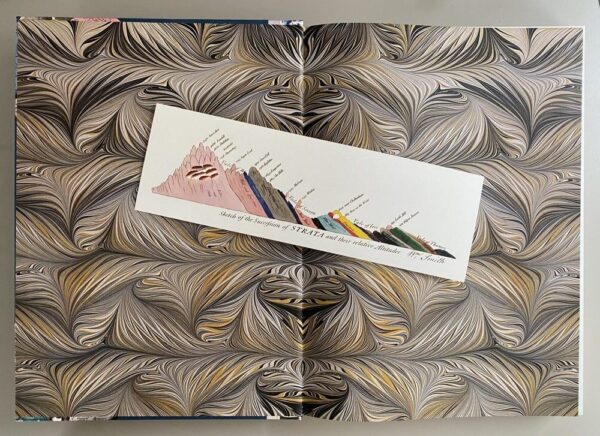
Related Sources:
- A biography of the “rock star” (ouch) William Smith from The Geological Society of America: https://rock.geosociety.org/net/gsatoday/archive/25/9/pdf/i1052-5173-25-9-38.pdf
- Goodreads: https://www.goodreads.com/book/show/51941505-strata
- An Interactive Engagement with William Smith’s Maps: http://www.strata-smith.com/

